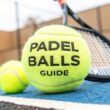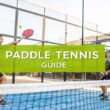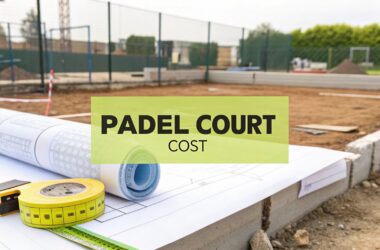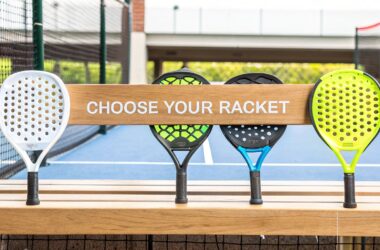So you’re ready to get into paddle ball. Great choice. It's an incredibly fast-paced game where you’re constantly reacting, hitting a rubber ball against a wall with a solid paddle, trying to catch your opponent off guard.
The core of learning how to play paddle ball is really about getting a feel for the basic strokes, understanding the court, and sharpening those reflexes. It’s a fantastic sport to jump into because the concept is simple, but there's always another level to reach.
Getting Started With Paddle Ball Basics
Welcome to the world of paddle ball! Before you start thinking about power serves or tricky drop shots, let's just get you comfortable on the court. Think of this as your quick-start guide, giving you just enough to get out there and start having fun.
The main goal is simple: you want to outplay your opponent by hitting the ball against the wall so they can't legally return it.
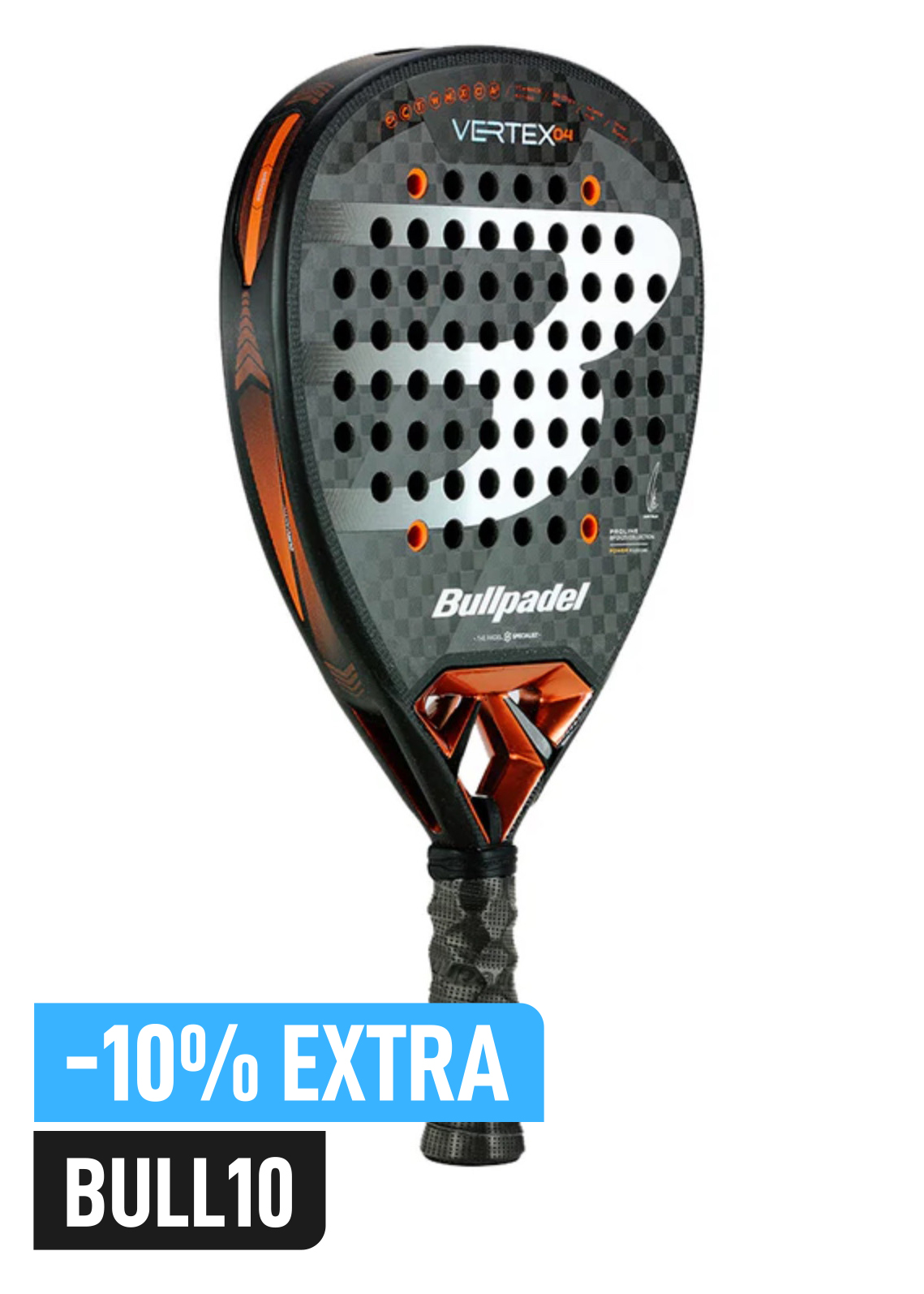
Buy the best padel gear to level up your next game!
CHECK OUT this deal from Padel Market!Get ready to take your game to the next level with the latest padel gear from Padel Market! Fast EU and Worldwide Shipping
The Core Components
At its heart, the game is beautifully straightforward. You only need a few key things to get going, and the rules start to make sense the moment you see a game in action.
- The Paddle: This is your main tool. It's a solid, stringless racket built for a good mix of power and control.
- The Ball: A small, pressurized rubber ball that's got a lot of life and bounces well off the wall.
- The Court: You'll usually play on a walled court, much like what you’d find in racquetball or squash.
- The Objective: Win rallies by hitting shots your opponent can’t get to before the ball bounces twice.
To get you up to speed quickly, here's a simple table that breaks down the essentials.
Paddle Ball at a Glance
| Component | Key Information |
|---|---|
| Equipment | A solid paddle (no strings) and a pressurized rubber ball. |
| Court | A single-walled or fully enclosed court. |
| Objective | Hit the ball against the wall so your opponent cannot return it. |
| Winning a Point | A point is won if the opponent fails to return the ball before it bounces twice. |
| Scoring | Games are typically played to 15 or 21 points. |
This table should give you a solid foundation. Just knowing these few things is enough to understand what's happening in a match.
The game has a surprisingly interesting history. The toy version many of us know—the wooden paddle with a ball on an elastic string—was actually invented back in the 1920s by William R. Lind. It was a clever way to test hand-eye coordination. You can dig into more historical details on the evolution of paddle sports if you're curious.
Paddle ball is a perfect gateway into racket sports. It’s less about pure strength and much more about strategy, shot placement, and reading your opponent. You learn the fundamentals of angles and court positioning that translate to so many other games.
Understanding these basic pieces is your first real step. Nobody expects you to be a pro on day one. Your only goal right now should be to get a feel for the paddle hitting the ball and how that ball comes off the wall. This is all about building a foundation of comfort and consistency. From there, we can start layering on specific techniques and strategies.
Choosing Your Paddle and Ball
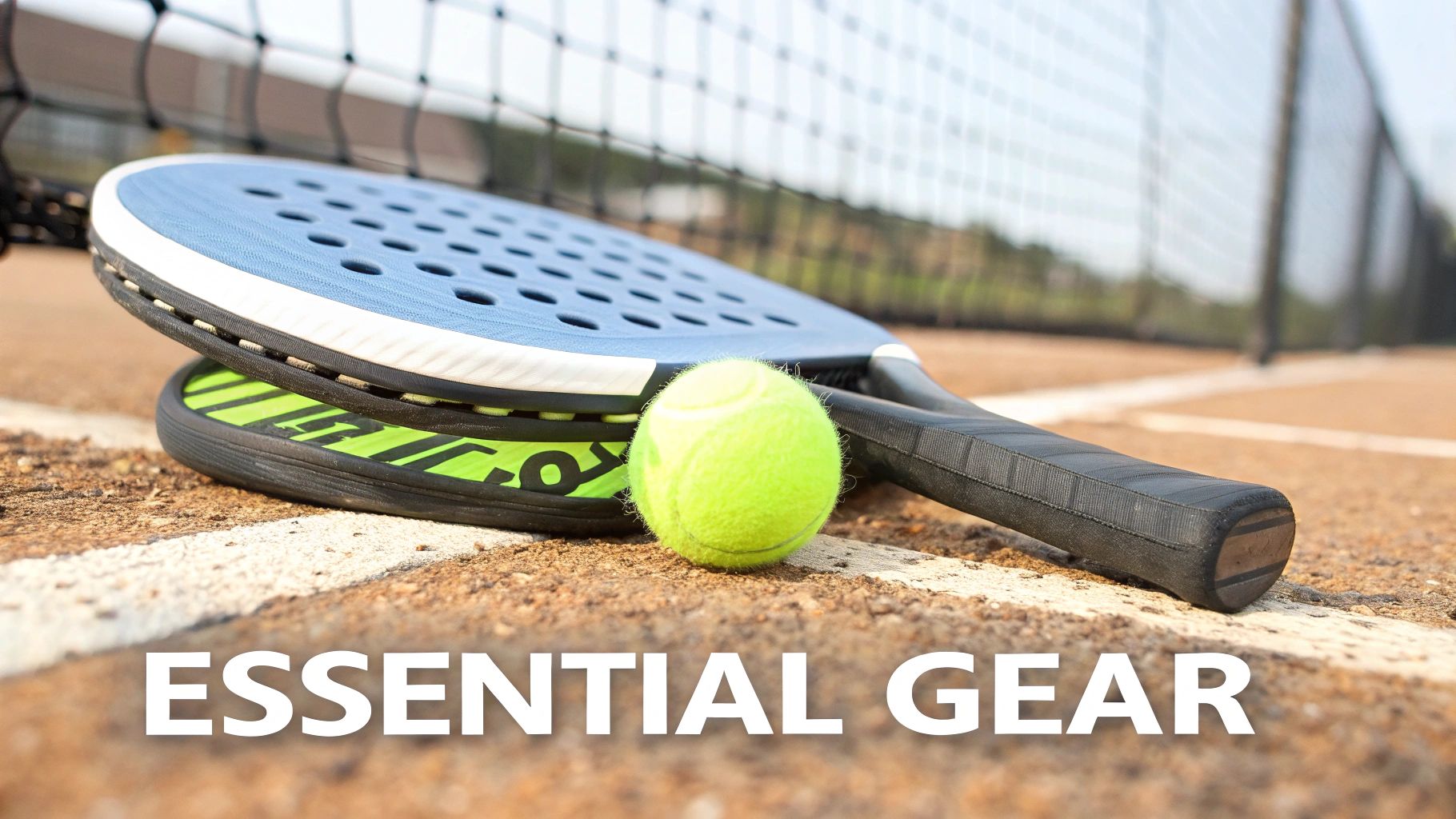
Honestly, your first win in paddle ball happens long before you step on the court. It’s all about picking the right gear from the get-go. This isn't about grabbing the most expensive paddle off the rack; it's about finding the equipment that actually fits your game right now.
A classic rookie mistake is grabbing the heaviest paddle you can find, thinking more weight automatically equals more power. Sure, a heavier paddle can add some oomph, but it often comes at the cost of control and can wear your arm out fast. That makes it tough to nail down your form when you're just starting.
To really get it right, you need to understand the basics: weight, balance, and what the paddle is actually made of. A lot of the same ideas apply to other racket sports, so checking out some essential tips for choosing a tennis racket can be surprisingly helpful.
Decoding Paddle Materials
The stuff your paddle is made of has a huge impact on how it plays—everything from raw power to the vibration you feel when you make contact. Each material brings something different to the table.
- Graphite: This is your go-to for control. Graphite paddles are light and stiff, which makes them feel really responsive. If you're a player who likes quick reactions at the net and placing the ball exactly where you want it, this is a solid choice.
- Fiberglass: Think of fiberglass as having a bit more flex. That extra give translates into more "pop" when the ball comes off the face. It’s perfect if you want to add some easy power to your shots without having to swing for the fences.
- Carbon Fiber: Usually what you'll find in the higher-end paddles, carbon fiber gives you a fantastic mix of power, control, and a bigger sweet spot. It's also super durable and gives you a really consistent feel no matter where you hit the ball on the paddle.
Think about your own style. Do you play a more defensive game with quick blocks, or are you an aggressive player always looking for the power drive? Knowing this will point you to the right material. If you really want to geek out on the tech, checking out the latest https://padelrumors.pages.dev/news/padel-racket/ is a great way to go deeper.
Pro Tip: As a general rule, lighter paddles (under 8 ounces) are fantastic for control and speed, which is why they're great for beginners. Heavier ones (over 8.5 ounces) give you more power but definitely require more strength to handle well.
Selecting the Right Ball
The ball is just as critical as the paddle. They aren't all the same—the pressure inside and the material they're made of dictate how fast they fly and how high they bounce.
When you're just starting out, grab a standard or high-pressure ball. These are bouncier and a little slower, which gives you that extra split second to get in position and react. It’s much more forgiving and helps build your confidence right away.
Once you get the hang of things, you might want to try a low-pressure ball. These are faster and have a lower, trickier bounce that demands better footwork and quicker hands. They're what more experienced players use to ramp up the speed and challenge of the game. Starting with the right ball just makes the whole learning process way more fun.

Buy the best padel gear to level up your next game!
CHECK OUT this deal from Padel Market!Get ready to take your game to the next level with the latest padel gear from Padel Market! Fast EU and Worldwide Shipping
Understanding the Court and Rules
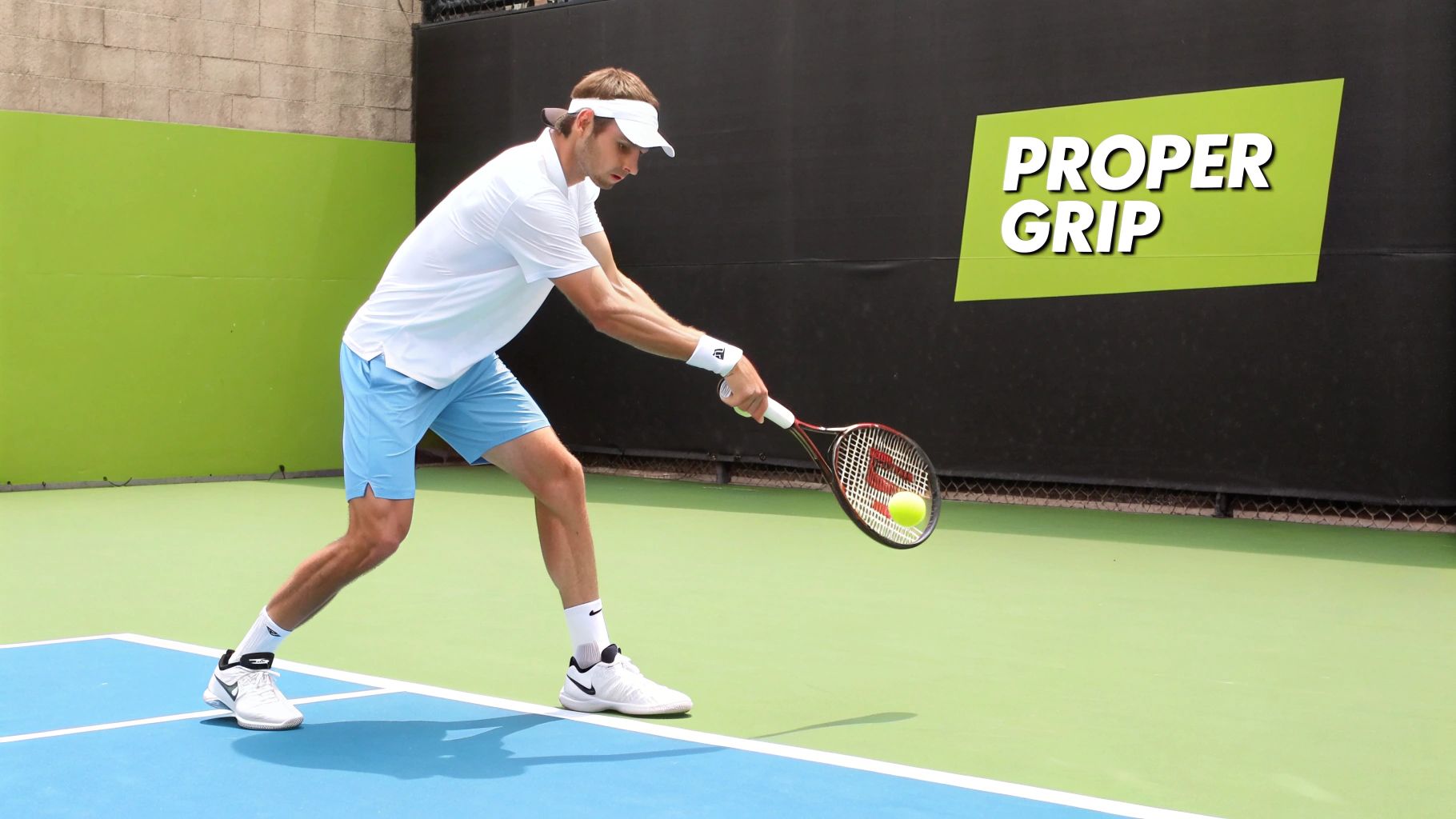
Before you can really start dominating a game, you’ve got to know the battlefield. Getting a feel for the court layout and the basic rules of paddle ball isn't about memorizing a textbook. It's about letting the game become second nature so you can just react and play.
Think of the court as telling you a story. Every single line has a reason it's there, all designed to keep the action fair and the pace lightning-fast. Let’s walk through the key areas you'll get to know very well.
Navigating the Court Lines
The court is broken up into a few key zones. When you're just starting, the most important lines are the ones that dictate the serve—after all, that's how every point kicks off.
- Short Line: You'll see this line running parallel to the front wall. When you serve, the ball has to hit the wall and then clear this line on its way down to be a legal serve. It stops players from hitting super soft serves that barely come off the wall.
- Service Line: This one is also parallel to the short line but sits further back. The server has to keep their feet behind this line while serving.
- Service Box: This is the area between the short and service lines where the server stands. It’s absolutely crucial to keep both feet inside this box until you’ve hit the ball.
One of the most common mistakes I see beginners make is stepping on or over the service line during their serve. That’s a foot fault, and it’s an instant loss of serve. Paying attention to where your feet are is a small detail that makes a huge difference.
Quick tip: New players often get "let" and "hinder" mixed up. A let is just a do-over of the point, usually called if the ball hits a weird crack or something on the court. A hinder is when one player gets in another's way, which usually results in a point for the player who was blocked.
How Scoring and Faults Work
Scoring in paddle ball is pretty simple, but there's a key twist: you can only score a point when you are the one serving. If you win a rally when your opponent is serving, you don't get a point. Instead, you win the serve, which is called a side-out.
Let's run through a quick example:
- You're serving, and you're up 3-2.
- You hit a good serve, and you both get into a rally.
- Your opponent can't return your shot before it bounces twice. You win the point! The score is now 4-2.
- On your next serve, you accidentally hit the ball into the floor before it hits the wall. That's a fault, and you lose your serve.
- Your opponent takes over serving, but the score stays at 4-2.
Games are usually played to 15 or 21 points, and you almost always have to win by two. Getting the hang of serving and scoring is fundamental. For a deeper dive, you can check out official paddle tennis regulations, as they have a lot of rules in common: https://padelrumors.pages.dev/news/rules-paddle-tennis/
And the biggest rule of all? The ball can only bounce once on the floor before you have to hit it. If it bounces twice, the point's over. This is what makes the game so quick and reactive, forcing you to stay on your toes and always think one shot ahead.
Mastering Your Basic Strokes and Serves
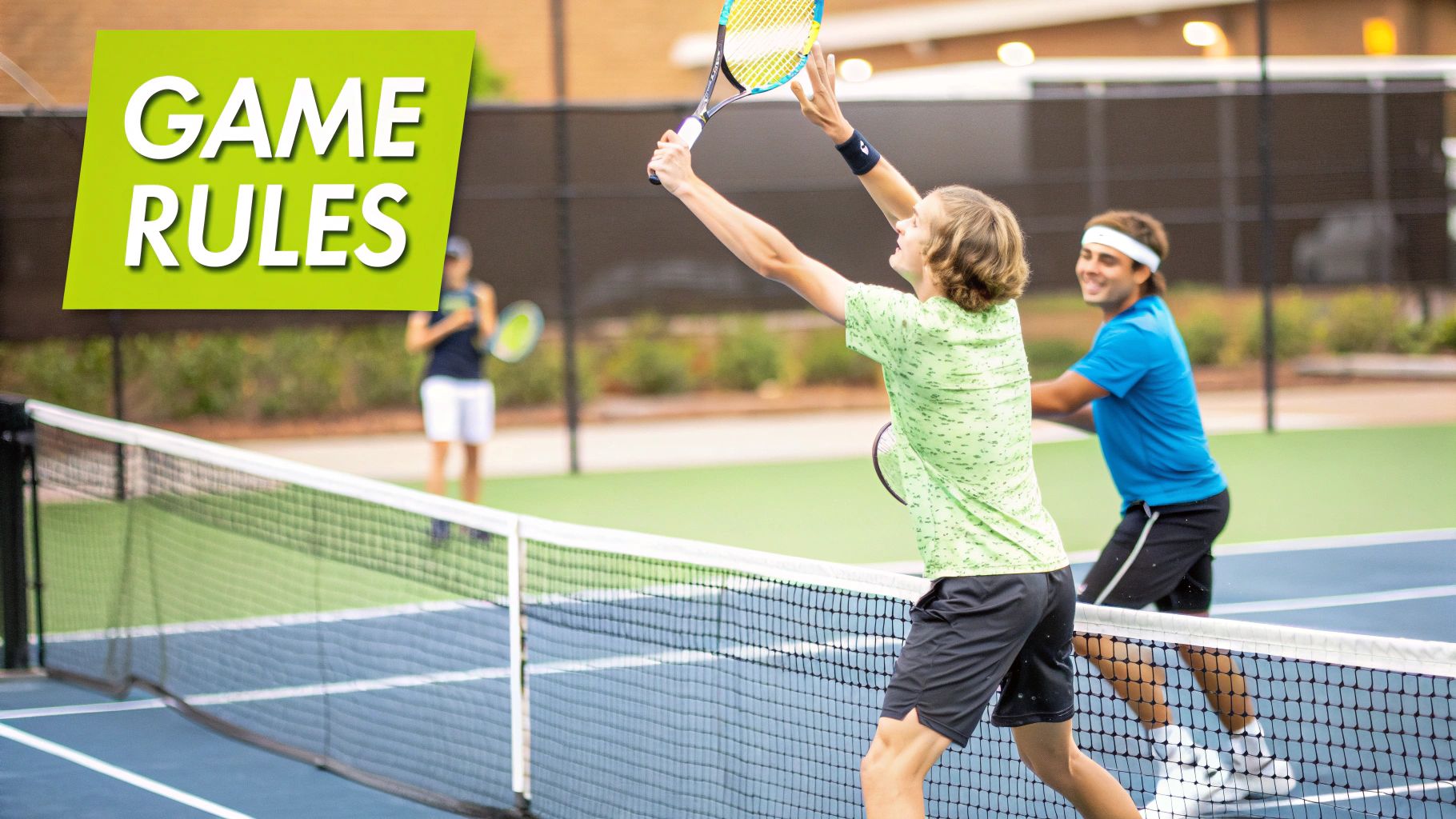
Alright, let's get into the good stuff—the strokes that form the foundation of every single rally. Your first instinct might be to hit the ball as hard as you can. Fight that urge. Right now, the goal is clean, repeatable mechanics to build solid muscle memory.
Good form starts with your core, not your arm. A classic beginner mistake is trying to generate all your power from a wild arm swing. Real power and control actually come from rotating your core and hips, creating a smooth energy transfer through your body, into the paddle, and finally, into the ball.
Your Foundational Forehand Stroke
The forehand is probably going to be your go-to shot. It's the one you hit on your dominant side, and it’s where you'll generate the most natural power. The trick is to get ready early and use your body's rotation.
As the ball heads your way, pivot your hips and shoulders, bringing the paddle back to about waist height. Your body should be turned sideways to the front wall. Then, as you swing forward, let your hips and shoulders rotate back towards the wall. They should lead the paddle through the shot.
Critical Cue: Aim to make contact with the ball out in front of your body, not beside it. This gives you the best leverage and control. If you wait too long, you’ll end up with a weak, wristy flick instead of a solid shot.
Perfecting this takes time, but it's completely worth it. As you practice, it's also a good idea to learn how to treat and prevent tennis elbow, a nagging injury common in racket sports. Trust me, proper form is your best defense.
Developing a Consistent Backhand
For most new players, the backhand feels pretty awkward at first. But whether you go with one hand or two, the basic ideas are the same as the forehand: turn your body, prepare early, and swing through the ball.
If you're using a one-handed backhand, your non-dominant shoulder should point toward the front wall as you set up. For a two-handed grip, you'll get a more stable and powerful swing, a lot like hitting a baseball. Many beginners find the two-handed backhand much easier to control early on.
Whichever you choose, avoid just poking at the ball. A full, fluid swing where you follow through completely across your body will give you much more consistent results. It's the key to placing the ball exactly where you want it.
Controlling the Ball with Serves
The serve is the only shot you have total control over, so you have to make it count. Don't just slap the ball in to start the point. Think of it as your first opportunity to put your opponent on the defensive.
Most beginners should start with a simple underhand serve. Here's a breakdown:
- Stance: Stand in the service box, feet shoulder-width apart, and turn sideways to the front wall.
- The Drop: Hold the ball out in front of you and simply let it drop. Don't toss it up—a simple drop is far more consistent.
- The Swing: As the ball falls, bring your paddle back and swing forward in a smooth, pendulum-like motion. Aim to make contact around knee height.
- The Follow-Through: Keep your swing going up and across your body, finishing near your opposite shoulder.
Once you get comfortable with the motion, start aiming for specific targets. A serve that hits a side wall after the front wall can be a nightmare for your opponent to return cleanly. This one simple tactic can win you a surprising number of easy points and give your confidence a huge boost.
Effective Drills for Beginner Players
Knowing the proper technique is one thing, but real improvement comes from building consistency. The fastest way to do that? Simple, repetitive drills. These exercises are all about developing muscle memory, turning those clunky, awkward movements into smooth, automatic reactions on the court. We aren't talking about complicated routines here; the goal is high-impact practice that gets you real results.
I'm going to walk you through three core drills that every new player should master. These aren't just random exercises—they're designed to systematically build your consistency, accuracy, and serve placement. The best part? You can do all of these on your own.
Wall Rallying for Consistency
This is the most fundamental drill in the book. All you have to do is keep a rally going against a wall for as long as you can. Forget about hitting it hard; your entire focus should be on hitting the ball cleanly to a spot where you can easily play the next shot.
Start by counting your successful hits in a row. When you first begin, aim for 10 consecutive shots. Once you can hit that mark without much trouble, push yourself to get 20, and then work your way up to 50. This drill is absolutely invaluable for finding your rhythm and getting a feel for how the ball comes off your paddle and the wall.
By focusing on sustained rallies rather than power shots, you train your body to stay balanced and prepare for the next hit. This is the bedrock of a solid defensive game and a crucial step in learning how to play paddle ball effectively.
Target Practice for Accuracy
Okay, once you can keep a decent rally going, it’s time to work on where the ball goes. Stick a small target on the front wall—a piece of tape or even a water bottle cap works perfectly. Stand at the short line and just practice hitting your forehand and backhand shots right at that target.
This drill forces you to think beyond just making contact and start considering shot direction. It really sharpens your hand-eye coordination and teaches you the small adjustments needed to guide the ball exactly where you want it. Getting better at this also helps you develop quicker hands. If you want more ideas on that front, check out these great drills to improve reaction time which are a perfect next step.
This simple graphic breaks down the flow of a good serve—a key skill you'll need to practice.
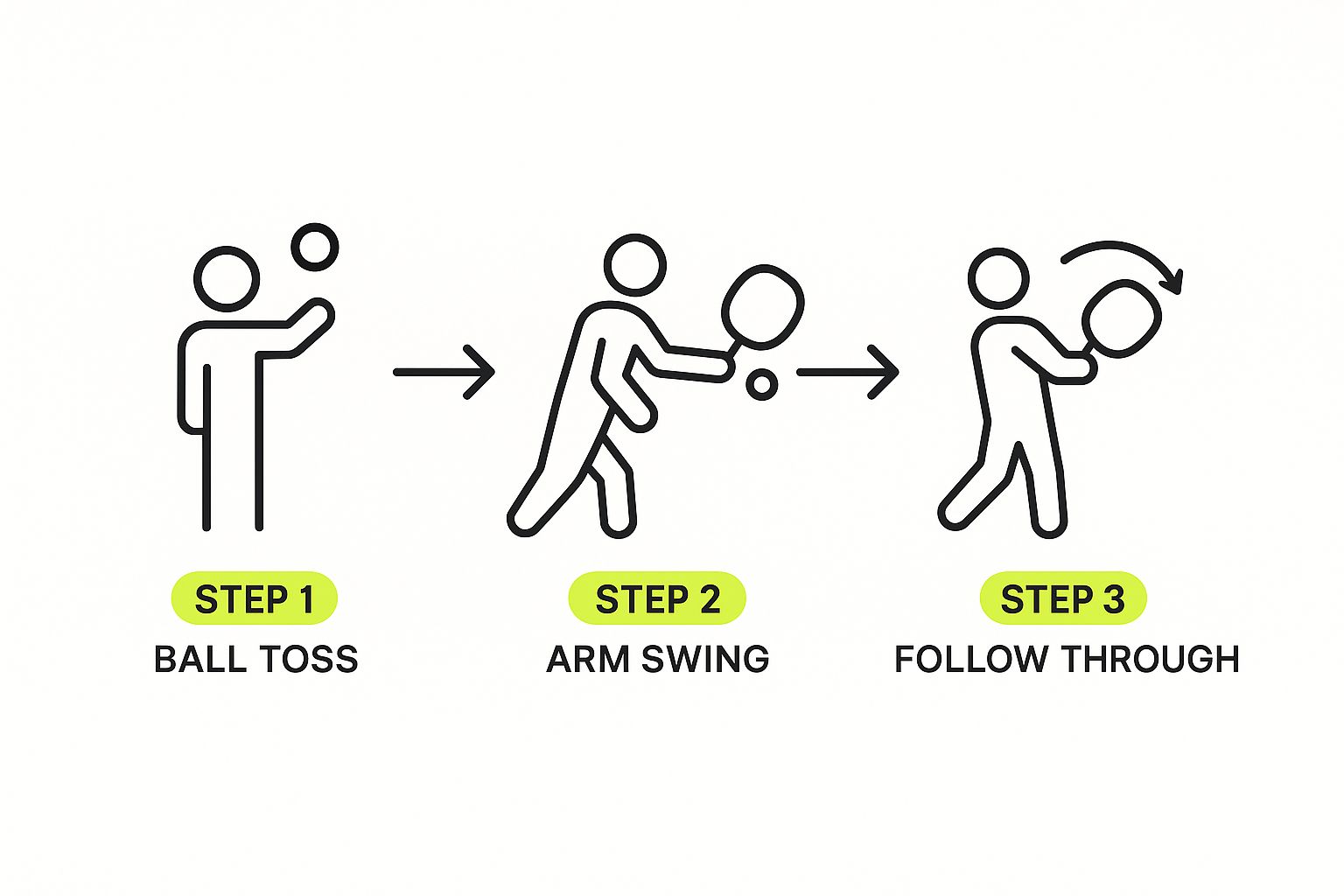
As you can see, a successful serve is a connected three-part motion, not just a wild swing of the arm.
Your Paddle Ball Questions Answered
As you start getting the hang of paddle ball, you're bound to have some questions. Don't sweat it—every single player starts in the exact same spot. Let's tackle some of the most common things that trip up beginners.
One of the first hurdles for a lot of people is just figuring out how paddle ball fits in with other racquet and paddle sports. They can all look a bit similar from a distance, but the courts, rules, and goals are worlds apart. Nailing this down early helps you build the right habits from day one.
What Is the Biggest Difference Between Paddle Ball and Pickleball
The simplest answer comes down to the court and what you're trying to do. Most paddle ball games are played against a single wall, kind of like squash or racquetball. Your goal is to smack the ball off that wall so your opponent can't return it before it bounces twice.
Pickleball, on the other hand, is a net game. It's always played over a net on a court that’s basically a mini tennis court, where you rally directly against your opponents. Just remember: paddle ball is a "wall sport," and pickleball is a "net sport."
A huge plus for wall-based paddle ball is that you can get an incredible solo workout. You can drill every shot you have just by hitting against the wall, making it super easy to sharpen your skills without needing to find a partner.
What Are the Most Common Beginner Mistakes
It's almost a rite of passage for new players to fall into a few common traps. Knowing what they are is the first step to avoiding them and speeding up your learning curve. If you can steer clear of these, you'll see progress much, much faster.
I see these three mistakes more than any others:
- Swinging with only your arm. New players often try to generate power with just their arm instead of rotating their hips and core. All your real power comes from using your entire body in a fluid motion.
- Waiting for the ball. It's so easy to just stand there and wait for the ball to come to you. You have to move your feet before the bounce to get into the best position for your return shot.
- The death grip. Holding the paddle way too tight is a classic beginner move. It kills your wrist flexibility and robs you of any touch or control you need for those softer, more precise shots.
Focus on getting your body to rotate, keeping your feet moving, and maintaining a firm but relaxed grip. These fundamentals are everything. They're the keys to unlocking consistent, controlled shots and will make a massive difference in how quickly you learn to play paddle ball well.


